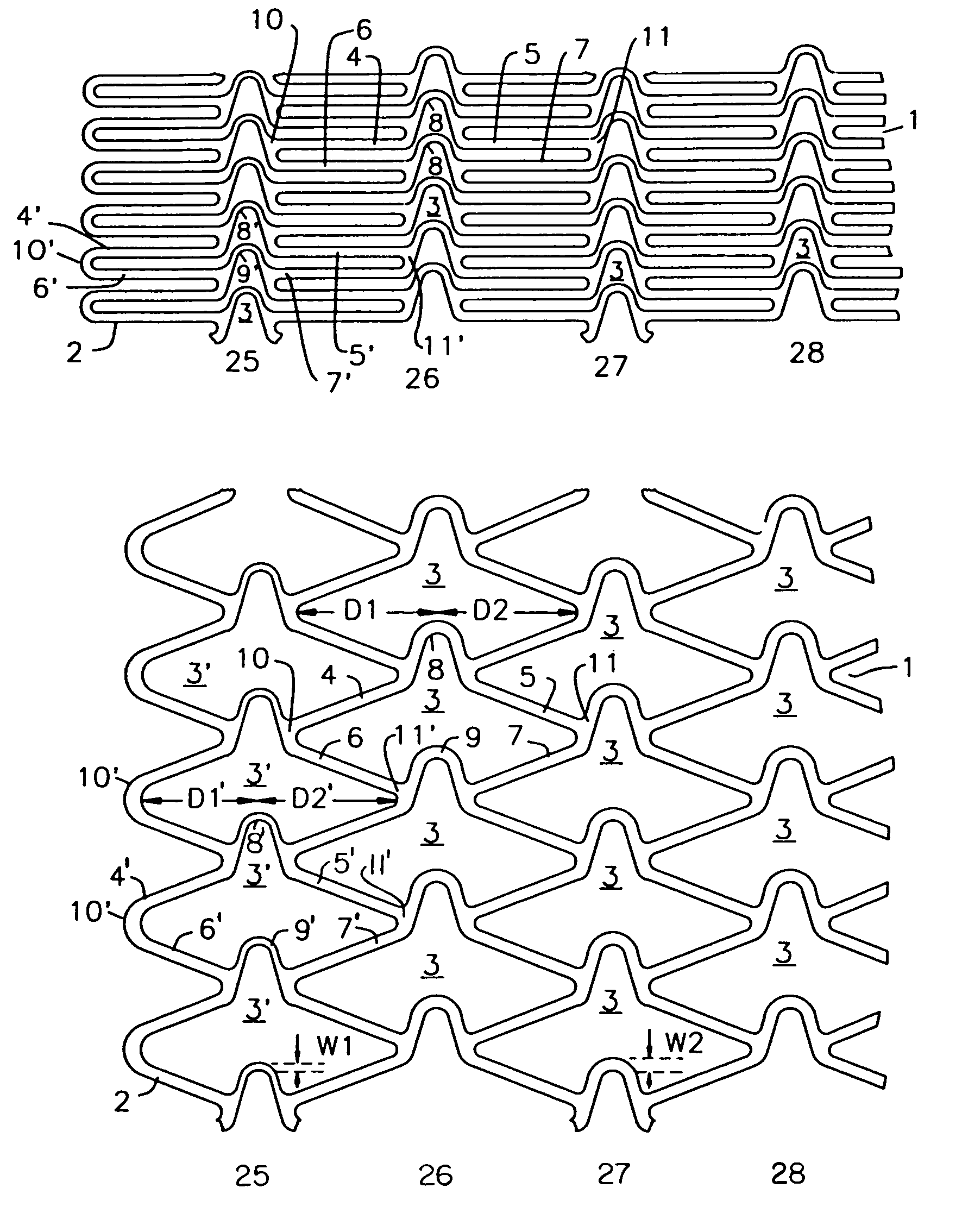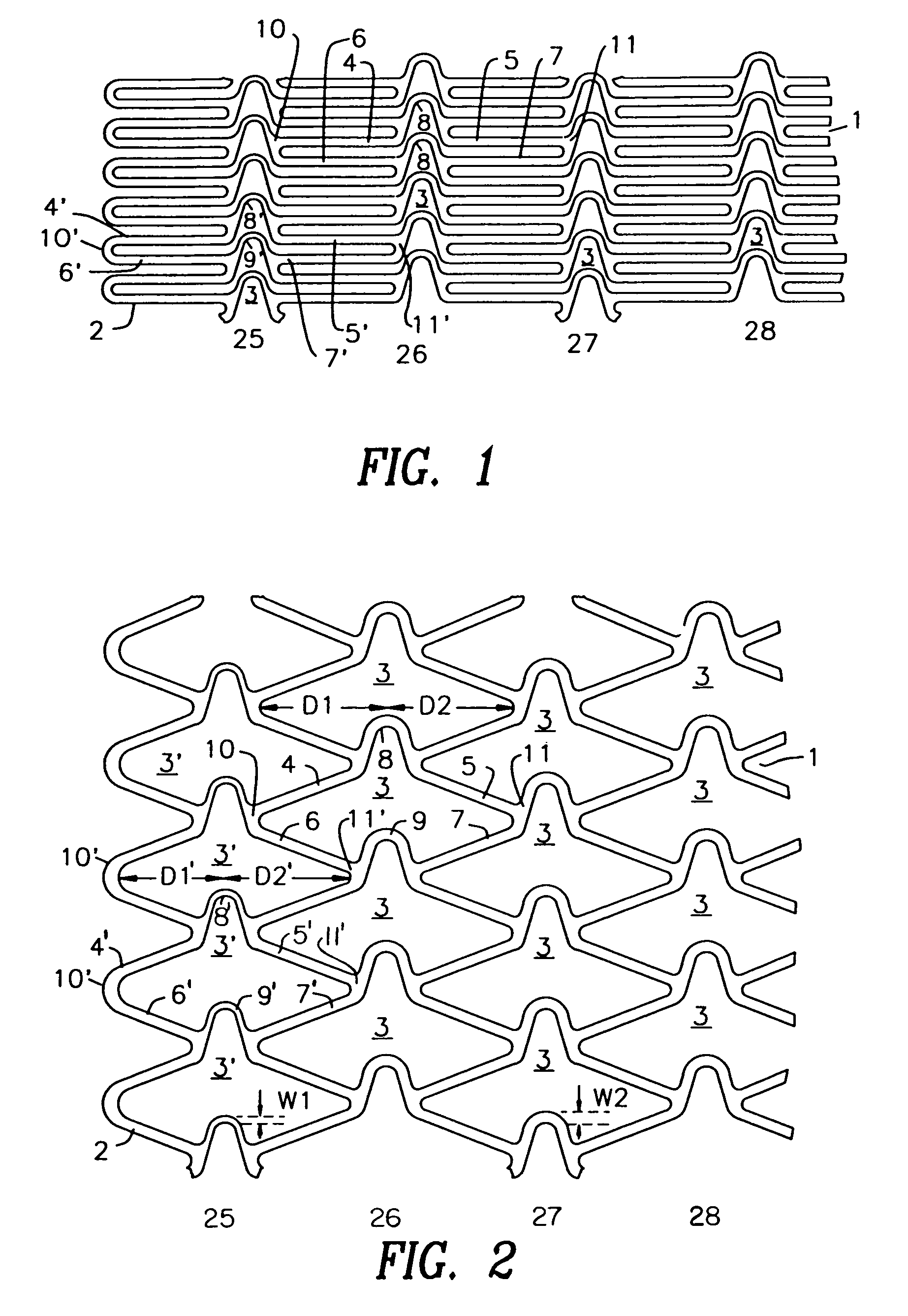Stent with variable features to optimize support and method of making such stent
a technology of stents and features, applied in the field of stents, can solve the problems of plaque breaking off, “flaring out” of the leading edge of the stent, and reducing the chance of a potential trauma point being created in the vessel, so as to improve the end effect of the stent, the effect of decreasing or increasing the thickness or width of the elements
- Summary
- Abstract
- Description
- Claims
- Application Information
AI Technical Summary
Benefits of technology
Problems solved by technology
Method used
Image
Examples
Embodiment Construction
[0032]FIG. 1 shows the general configuration of one embodiment of a stent 1 fabricated in accordance with the present invention. The stent 1 may be fabricated of bio-compatible materials such as stainless steel 316L, gold, tantalum, nitinol or other materials well known to those skilled in the art as suitable for this purpose. The dimensions and gauge of material utilized may be varied as specific applications dictate. The stents of the present invention generally may be constructed in a manner in accordance with the stent described in U.S. patent application Ser. No. 08 / 457,354, filed Jun. 1, 1995, the disclosure of which is incorporated herein by reference.
[0033]FIG. 1 is a side view of the distal end 2 of stent 1 of the present invention, showing the general pattern of the stent. As shown in FIGS. 1 and 2 the pattern may be described as a plurality of cells 3 and 3′. Each cell 3 is provided with a first member 4, a second member 5, a third member 6, and a fourth member 7. A first...
PUM
| Property | Measurement | Unit |
|---|---|---|
| Length | aaaaa | aaaaa |
| Flexibility | aaaaa | aaaaa |
Abstract
Description
Claims
Application Information
 Login to View More
Login to View More - R&D
- Intellectual Property
- Life Sciences
- Materials
- Tech Scout
- Unparalleled Data Quality
- Higher Quality Content
- 60% Fewer Hallucinations
Browse by: Latest US Patents, China's latest patents, Technical Efficacy Thesaurus, Application Domain, Technology Topic, Popular Technical Reports.
© 2025 PatSnap. All rights reserved.Legal|Privacy policy|Modern Slavery Act Transparency Statement|Sitemap|About US| Contact US: help@patsnap.com



